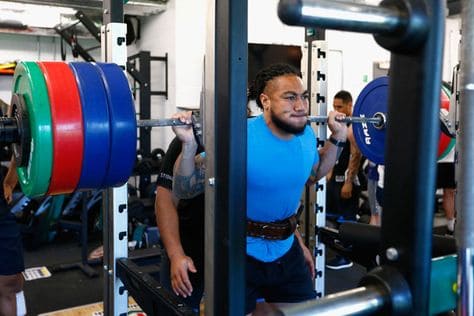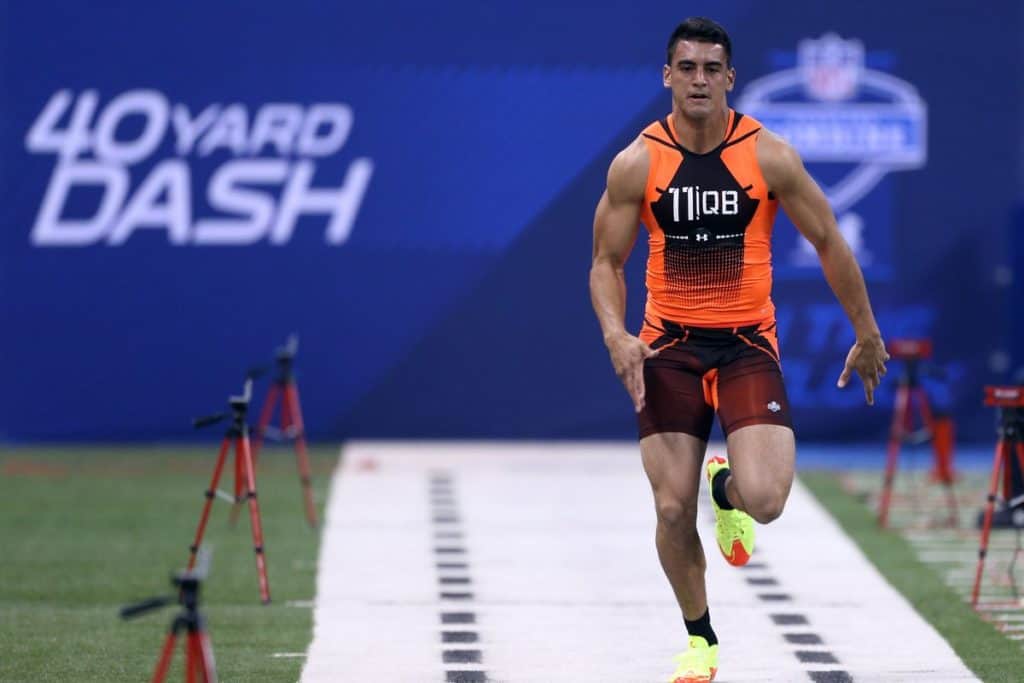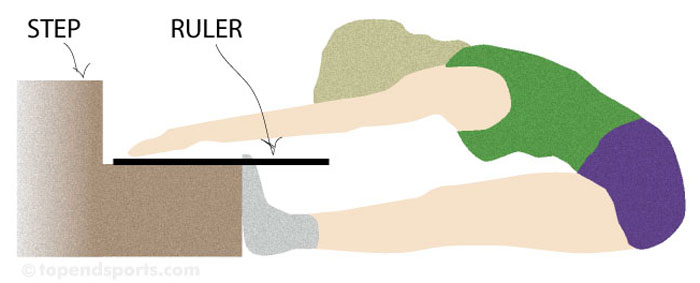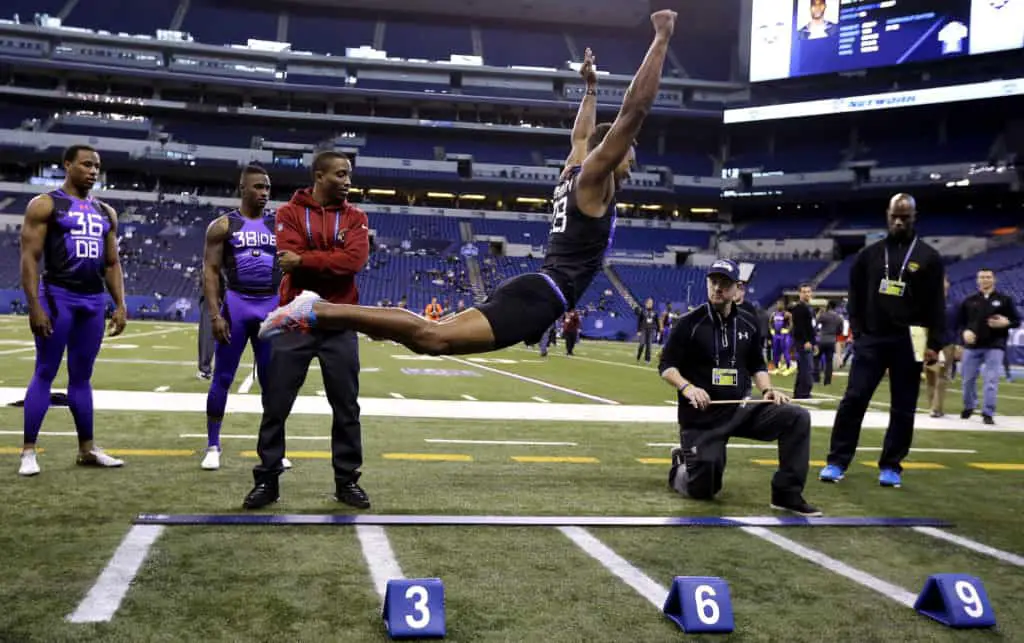
Rugby is a grueling sport that will test all of your athletic attributes. If you want to dominate on the rugby field you need to have a combination of speed, strength, power, endurance and flexibility.
To determine your level of these athletic attributes you can perform a series of tests which will let you know just how fit you are and how well you can handle the rigours of rugby. In this article we will explore some of the top fitness tests rugby players should be performing.
What are the best fitness tests for rugby?
The best fitness tests for rugby are as follows:
Strength – 1 rep max on squat
Speed – 10m, 20m and 40m timed sprint
Flexibility – Sit and reach test
Agility – 3 cone drill
Endurance – Welsh Anaerobic Test, Bronco Test and Metabolic Fitness Index for Team Sports
Power – standing broad jump
How To Test Rugby Players’ Strength?

Rugby players need to be strong to handle the contact phase of the game. They use this strength to make tackles, run the ball into contact and to cleanout during the ruck.
These phases of the game require players to have powerful and strong legs which they use to drive off the ground and generate force, helping them drive their opposition to the ground in tackles or run over the advantage when carrying the ball.
One of the best tests of leg strength rugby players can perform is a squat max. Rugby players should perform a 1 rep max to determine maximal strength and a 10 rep max to test their ability display strength repeatedly.
To perform a 1 rep max players should perform a typical squat warm up. Then they should increase the weight in a gradual method to activate their muscles and central nervous system before finally arriving at the maximum weight they can squat for 1 rep. Rugby players should use the same method when testing their 10 rep squat max.
Rugby players can also use a wave method warm up which has been shown effective in allowing athletes to display their full strength.
In the wave method an athlete will work up to 80% of their max then reduce the weight and perform a few sets before then working up to 90% of their max. They will repeat these waves a number of times before they attack maximal weights.
How To Test Rugby Players’ Speed?

Rugby is a running heavy sport where players need to regularly sprint to run the ball down the field to score a try, to get into position and to make tackles.
Rugby players need to be fast and the best way to test the speed of players is to have their sprints timed over distances regularly covered by players during a match, notably 10m, 20m, 30m and 40m.
For rugby forwards their times over 10m and 20m are more important as these are the distances they are most likely to sprint. While for backs their times over 30m and 40m are more important as they are expected to make longer runs in the open field and cover more territory during a phase of play.
Testing sprint times is very simple; you just need two cones to mark out the correct distance and a stopwatch to time the athlete. If you are timing by hand it is best to have at least a couple people taking time to account for human error.
How To Test Rugby Players’ Flexibility?

Rugby will test your flexibility. Players are constantly moving their bodies through full range of motion as they run, tackle, kick, dive and jump.
Hamstring flexibility is an important aspect of running, jumping and kicking. An effective way to test rugby players’ hamstring flexibility is the sit and reach test.
To perform the sit and reach test rugby player sit with their feet fully extended and pressed against a block. They then lean forward and try reach as far as possible. The distance is measured.
How To Test Rugby Players’ Agility?
Rugby athletes have to be very agile. They need to be able to quickly change direction to evade defenders or to get into position to tackle sprinting ball carriers.
A great way to test a rugby player’s ability to change directions and their overall agility is the 3 cone drill.
To perform the cone drill take 2 cones and place them 5m apart in a straight line, then take a 3rd cone and place it 5m horizontally apart from the second cone.
Have the rugby player start at the 1st cone. They then run to the 2nd cone, back to the 1st cone, around the outside of the second cone and around the 3rd cone before finishing at the start.
The 3 cone drill tests a rugby player’s speed over a short distance as well as their ability to quickly change direction.
How To Test Rugby Players’ Endurance?
A rugby game lasts 80mins and during that time players will typically run between 5km to 6km. Over the course of the match rugby players will be sprinting, running quickly, jogging and walking. To handle this high amount of running and the constant changing of pace rugby athletes need a lot of endurance.
Two great tests to determine the endurance of rugby players are the Bronco test and the Metabolic Fitness Index For Team Sports (MFITS).
The Bronco test is like the beep test on steroids. It originally comes from New Zealand and requires you to set cones at 20m, 40m and 60m. To perform the test you have to run to each cone and back a total of 5 times. Athletes are allowed no breaks. Rugby backs should be completing the Bronco test in 4:40mins while forwards should aim to be done in 5mins.
To perform MFITS players must sprint for 100m, rest for 10 minutes, run 400m at maximum effort, rest for 20 minutes before finally running either 1500m or 800m at top speed.
1500m is more suitable for backs while 800m is better for forwards. Rugby backs should be completing the 1500m test in under 5:30 minutes while rugby forwards need to be stopping the clock under 3:00 minutes over 800m.
How To Test Rugby Players’ Power?

Rugby players need to be explosive. They need to be able to generate large amounts of power in a short amount of time when they are tackling the opposition, sprinting, jumping or kicking the ball. Rugby players’ power is largely generated through their.
A great test of the power of rugby players is the standing broad jump. To perform a standing broad jump rugby players need to stand with their feet shoulder width apart, they then need to jump as far forward as possible. You then record the distance they jumped.
Rugby players should aim to jump at least 250cm during the standard broad jump.
Rugby players can maximise their standing broad jump by squatting down and swinging their arms forward when jumping.
